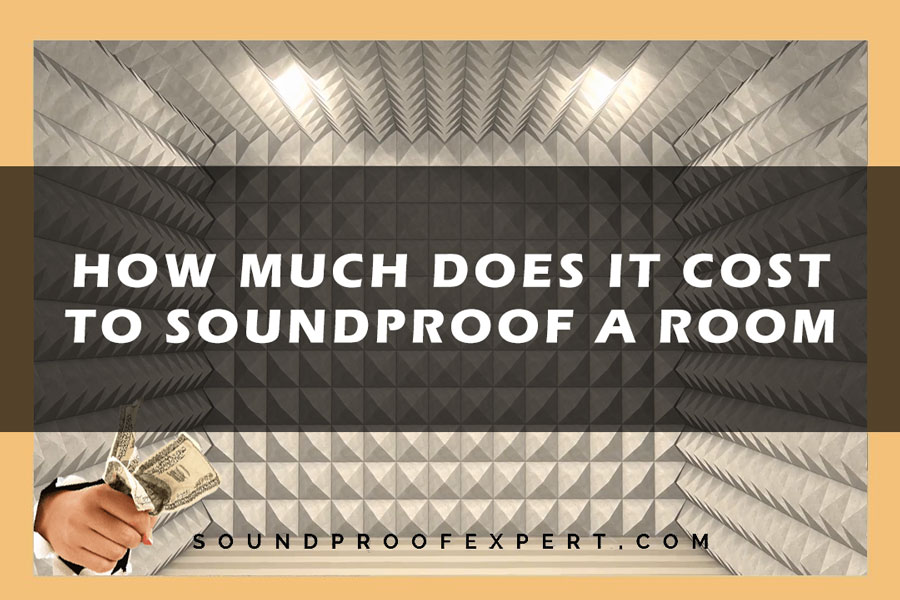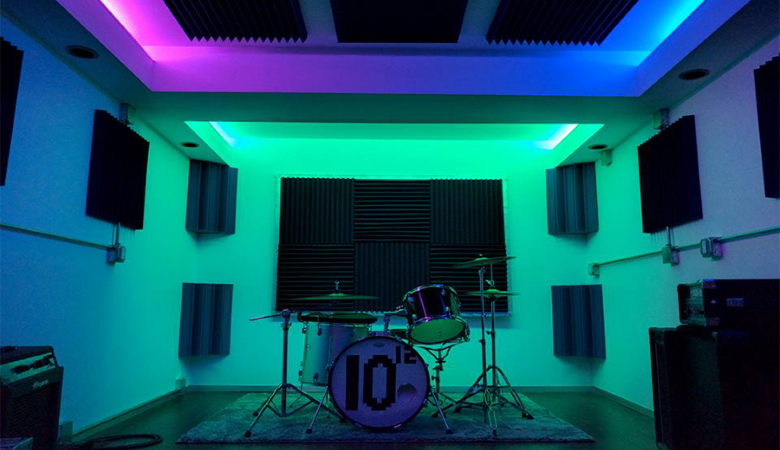
Living on the average street means being respectful of your neighbors and taking them into consideration, and if you’re someone who likes to make noise, this can be a challenge.
Taking the steps to soundproof a room is the next best thing, but there’s a lot to consider to get the job done, especially when it comes to money.
How much does it cost to soundproof a room, then?
The cost to soundproof one room in your house can range from roughly $1,000 to $2,500, depending on materials.
This includes all aspects like flooring, walls, drywall, and windows, which all have to be considered.
Before you get started on your noise-friendly living space, it’s a good idea to see what sort of costs you’re up for. We’ve compiled a detailed guide to the money involved and how you can cut corners to make it cheaper while still being effective and well-made, so read on to find out how to soundproof for less.
Why Is Soundproofing So Expensive?
If you’ve ever looked into soundproofing your home or a room before, you already know that it’s not such a straightforward task.
Rather than just one thing that needs to be done to achieve a soundproof room, there are a lot of factors that come into play, and the costs can easily add up.
To determine where some of the costs come from, we’ve covered all of the basics that should be looked at when soundproofing. Not all of these will be required and some will get better results than others, depending on the type and volume of sound you’re trying to control.
- Walls: Included in the walls, you’ll need to think about using soundproofing drywall which costs around $40 per sheet. Also, you may want textured wall panels, foam insulation, and acoustic foam, all priced per square foot.
- Ceilings: The ceiling can be covered with soundproofing drywall, textured paint, acoustic tile, and acoustic foam, costing hundreds per room to do just one ceiling.
- Windows: A soundproofing window costs from $300 to $1,500 per window, as well as sound reduction window treatments like curtains and blinds that can add another layer of protection.
- Floors: Area rugs can be costly if a good quality choice but they provide soundproofing for floors where you’re unable to utilize other covers like carpet, vinyl, and rubber tiles.
How Much Does It Cost to Soundproof Your Room?

The specific room of your house that you hope to soundproof will also dictate what measures need to be taken.
Some rooms, like a music or media room, need more than others and will be more expensive to complete.
- Music room: This and other high-volume spaces like media rooms will be the most expensive as they require the full treatment of walls, windows, ceilings, and floor. You can expect to pay the higher range of $2,500 for a room like this.
- Gaming room: A gaming room may be costly, depending on what games are being played, and like a music room this might require the full extent of soundproofing methods.
- Children’s room: To keep the noise out of a kid’s room to allow them to sleep or prevent a baby’s crying from waking others, you won’t need to go too extreme. Some basic materials should get the job done for under $1,000.
- Garage: A garage is already poorly insulated which means spending more to cover up the cracks and seals where the sound gets through. However, as they’re usually further away from the house, they may not need as much protection.
Tips for Cutting Costs When Soundproofing

Adding up the costs of soundproofing can be daunting, but like all DIY jobs, there are ways to do it effectively without blowing out your budget.
Follow these tips to make a room more soundproof without having to spend a fortune.
- Choosing a thicker curtain or drapery can help block sounds, and means no additional purchases as you would have had to buy them anyway.
- Adding a floor mat or pad underneath an area rug gives an additional layer of sound protection for less. This is especially helpful if you’re trying to reduce vibrations and sound from upper levels.
- Everyday materials like egg cartons, foam, and cardboard can provide a cheap and easy layer of protection against sound.
- Larger upholstered furniture like sofas do a good job of absorbing sound. If you have space for them, placing one in the middle of the room can help.
- Adding another layer of drywall can be as effective as some types of soundproofing drywall. If you’re handy, you can do this job yourself for cheap.
- If you’re trying to keep sound in, hang large blankets over the areas where sound usually escapes like windows and doors, and affix them to the wall.
- Find a cheap soundproofing foam product and put it up on the walls, doors, and windows. Some of the more affordable options can be just as effective as long as you know the right places to hang them.
- Invest in an affordable noise machine for areas like baby’s nurseries if you’re trying to drown out the exterior sound and don’t want to make any changes to the room.
A Soundproof Space for Less
Having space where you feel free to make as much noise as possible is a dream come true for many, and whether you want to practice with a band, work with power tools, or enjoy your home cinema to its full potential, there’s nothing like it.
With these tips and ideas, you can create a soundproof room for less, and turn the volume up without a worry in the world.
Related Questions

Soundproofing your home or just a room or area is no easy feat, and there’s a lot to consider from the windows to the walls.
If you’ve been thinking about creating a soundproof space at home and aren’t sure where to begin, read on to see our expert answers to some commonly asked questions about the process.
Do Egg Cartons Absorb Sound?
Egg cartons have long been used as a cheap way to reduce noise, as the textural ripples of the cartons can help to break up sound waves.
This distorts the sound and sends it into different directions which reduces the volume, and if you have enough of them on the walls of a room, you should notice a difference.
What Flooring is Best For Soundproofing?
The right choice in flooring is just as important as walls and windows if you want to soundproof a room and reduce the transmission of sound from one space to another.
The best acoustic materials to reduce sound from the floor up include carpet, wood plastic composite, cork, vinyl tiles, and rubber.
Can Rugs Quieten a Room?
An easy and attractive way to reduce the sound of a room is to lay area rugs on the floor or hang them on the walls where possible.
A rug or carpet can dampen vibrations, deflect noise made by footsteps, furniture, and pets, and reduce the sound that transfers from one space to another, either from another level or adjoining room.
Resources
